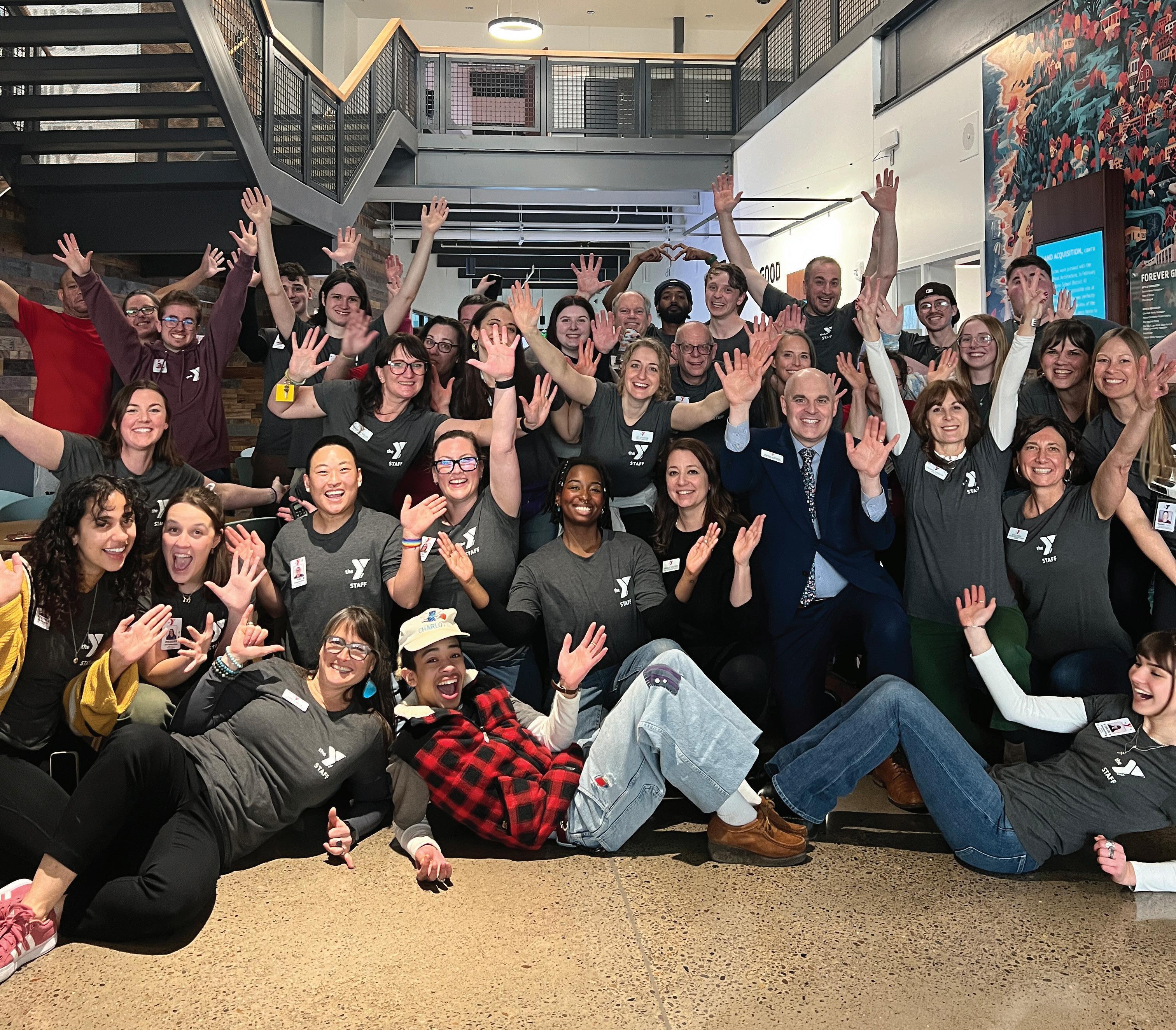MONDAY, OCT. 20, 2025
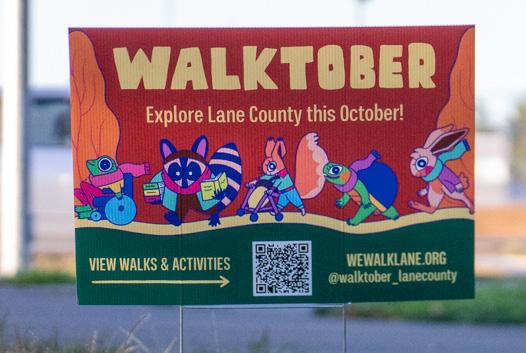

MONDAY, OCT. 20, 2025

Walktober began this month, offering dozens of walking events that exhibit Lane County’s history and culture.
Take a step foward this Walktober SPORTS
By Henry Light Sports Writer
When Oregon lost back-to-back matches in straight sets to USC on the road and Washington at home in the third week of Big Ten play, head coach Trent Kersten echoed his comments from the week before, when his team beat Iowa and Ohio State at home.
“At the end of the day, we’re in the arena that we want to be in. We’re in the arena of the Big Ten, playing really quality teams and we have so much to grow,” Kersten said after the loss to Washington. “We’ve got to be careful not to want it before we give them enough time to get there.”
Kersten was able to do so because he has preached patience and growth at every turn for his team that features eight true freshmen and 14 new players total.
Several of the freshmen have shouldered heavier workloads six matches into Big Ten play, with opposite hitter Alanah Clemente leading the team
Continue story on page 8
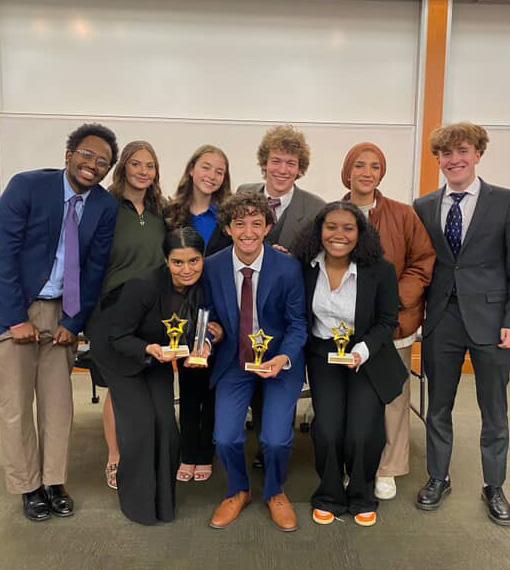
Opinion: Stigma thrives in silence, but University of Oregon students can change that – one conversation at a time.
UO’s forensics program loses CHC support amid university-wide budget cuts, leaving future of Mock Trial and Speech and Debate uncertain.
By Elle Kubiaczyk News Reporter
In early September, Trond Jacobsen, the head of forensics since 2013, attended a meeting with Clark Honors College leadership to discuss completed travel planning and the upcoming season. Instead, he was informed that the forensics program had been cut.
Cutting the program leaves funding uncertain for mock trial and speech and debate. Without faculty leadership at the head of the program, the clubs remain in limbo with their funds.
The cut was attributed to budget cuts at the CHC.
“I was told that they were going to end honors college support for the program. That also meant laying me off, first as director of forensics on Dec. 3, and then as a faculty member later on,” Jacobsen said.
Continue


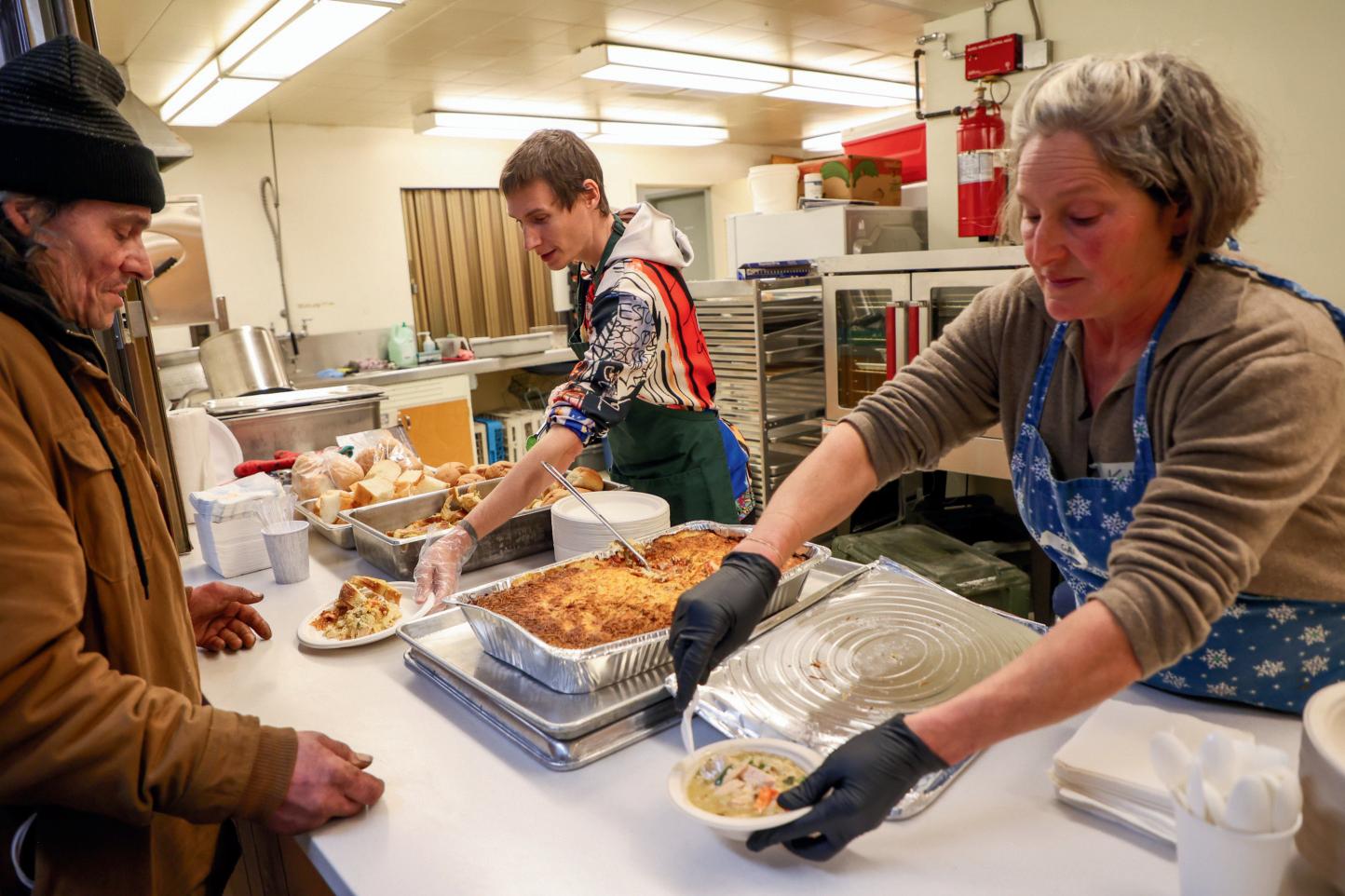


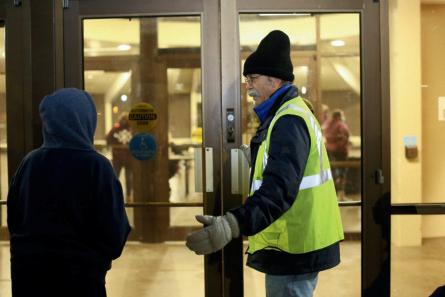

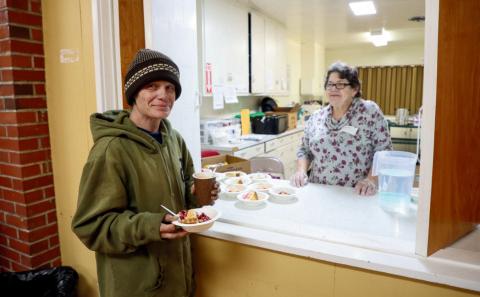












EDITOR IN CHIEF
Tarek Anthony
PRINT MANAGING EDITOR
Ryan Ehrhart
DIGITAL MANAGING EDITOR
Ysabella Sosa
NEWS EDITOR
Reilly Norgren
INVESTIGATIONS EDITOR
Ana Narayan
A&C EDITOR
Claire Coit
SPORTS EDITOR
Jack Lazarus
OPINION EDITOR
Gracie Cox
PHOTO EDITOR
Saj Sundaram
COPY CHIEF
Olivia Ellerbruch
VIDEO EDITOR
Jake Nolan
PODCAST EDITOR
Stephanie Hensley
SOCIALS EDITOR
Ysabella Sosa
VISUALS EDITOR
Noa Schwartz
DESIGN EDITOR
Adaleah Carman
DESIGNERS
Abigail Raike
Eva Andrews
Maya Gooneratne
PUBLISHER AND PRESIDENT
Eric Henry (X317) ehenry@dailyemerald.com
VP OPERATIONS
Kathy Carbone (X302) kcarbone@dailyemerald.com
DIRECTOR OF SALES & DIGITAL MARKETING
Shelly Rondestvedt (X303) srondestvedt@dailyemerald. com
CREATIVE & TECHNICAL DIRECTOR
Anna Smith (X327) creative@dailyemerald.com
ACCOUNT EXECUTIVES
Torin Chevalier
Camcole Pereira
Ava Stephanian Elliot Byrne
THE DAILY EMERALD
The Daily Emerald is published by Emerald Media Group, Inc., the independent nonprofit media company at the University of Oregon. Formerly the Oregon Daily Emerald, the news organization was founded in 1900.
Emerald Media Group 1395 University St.,#302 Eugene, Or 97403 (541)-346-5511

By Daily Emerald Staff
The Emerald Media Group is deeply alarmed by the blatant attack on press freedom witnessed this week at the Indiana Daily Student, the independent student newspa per of Indiana University.
The termination of Director of Student Media Jim Ro denbush for standing against school-sponsored censor ship is completely unacceptable. Censorship of the press from any government body is intolerable, let alone from a public university where the free exchange of ideas should be encouraged, not silenced.

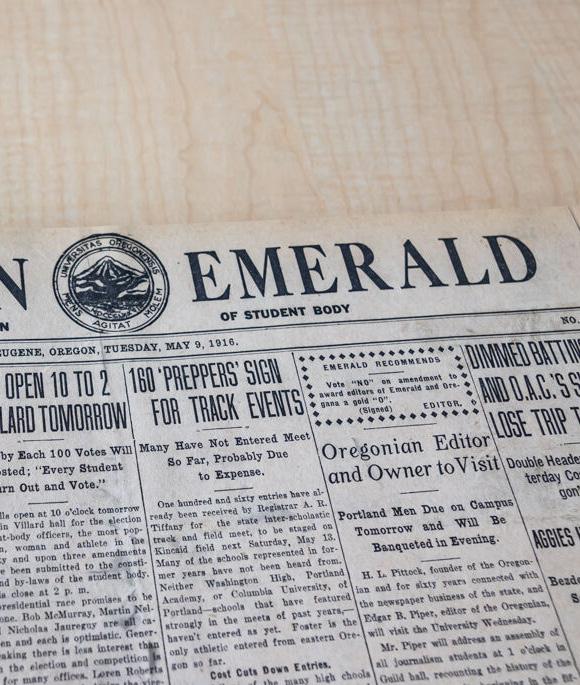
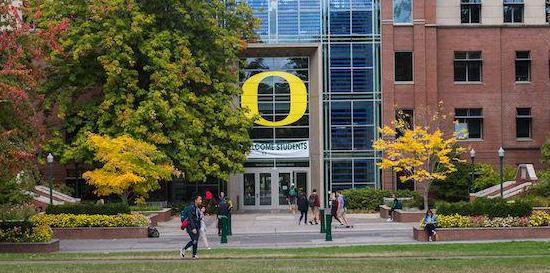
By Tarek Anthony Editor-in-Chief

Last week, the Emerald Media Group joined a national amicus brief led by the Student Press Law Center and the Foundation for Individual Rights and Expression in support of The Stanford Daily’s lawsuit against the United States government. The case alleges that the government has targeted international students at Stanford for their participation in student journalism and that these actions have led to self-censorship and fear across student newsrooms. According to the brief, numerous international students at The Stanford Daily stopped writing or withdrew bylines out of concern of retaliation in the form of deportation or visa revocation.
FIRE has accused United States Secretary of State Marco Rubio of weaponizing parts of the Immigration and Nationality Act to punish students for their media coverage.
Such actions are a direct infringement on free expression protected by the First Amendment and have created a chilling effect on student journalists nationwide. As an independent student publication that values a diverse staff and source base, we are keenly aware of how similar fears have influenced students’ willingness to participate in protected speech at the University of Oregon.
In recent months, The Daily Emerald has seen a sharp increase in international students
refusing interviews or requesting anonymity out of fear of retaliation. This reflects the same chilling effect described in the brief — one that targets both journalists and students. Any threat of retaliation for exercising free speech is a direct attack on the First Amendment and will not be tolerated.
An amicus brief, meaning “friend of the court,” is a legal filing submitted by individuals or groups who are not direct participants in a case. It is aimed at providing support to one side of the case and helping the court understand the broader implications of its decision.
We joined this brief with over 55 other schools, because the right to speak and report freely is a nonnegotiable hallmark of democracy. No student — citizen or noncitizen — should have to balance their right to free speech with fear of retaliation in any form.
The Emerald Media Group stands proudly in solidarity with The Stanford Daily. Our participation is a reflection of our dedication to protecting free speech — after all, journalism does not exist without it.

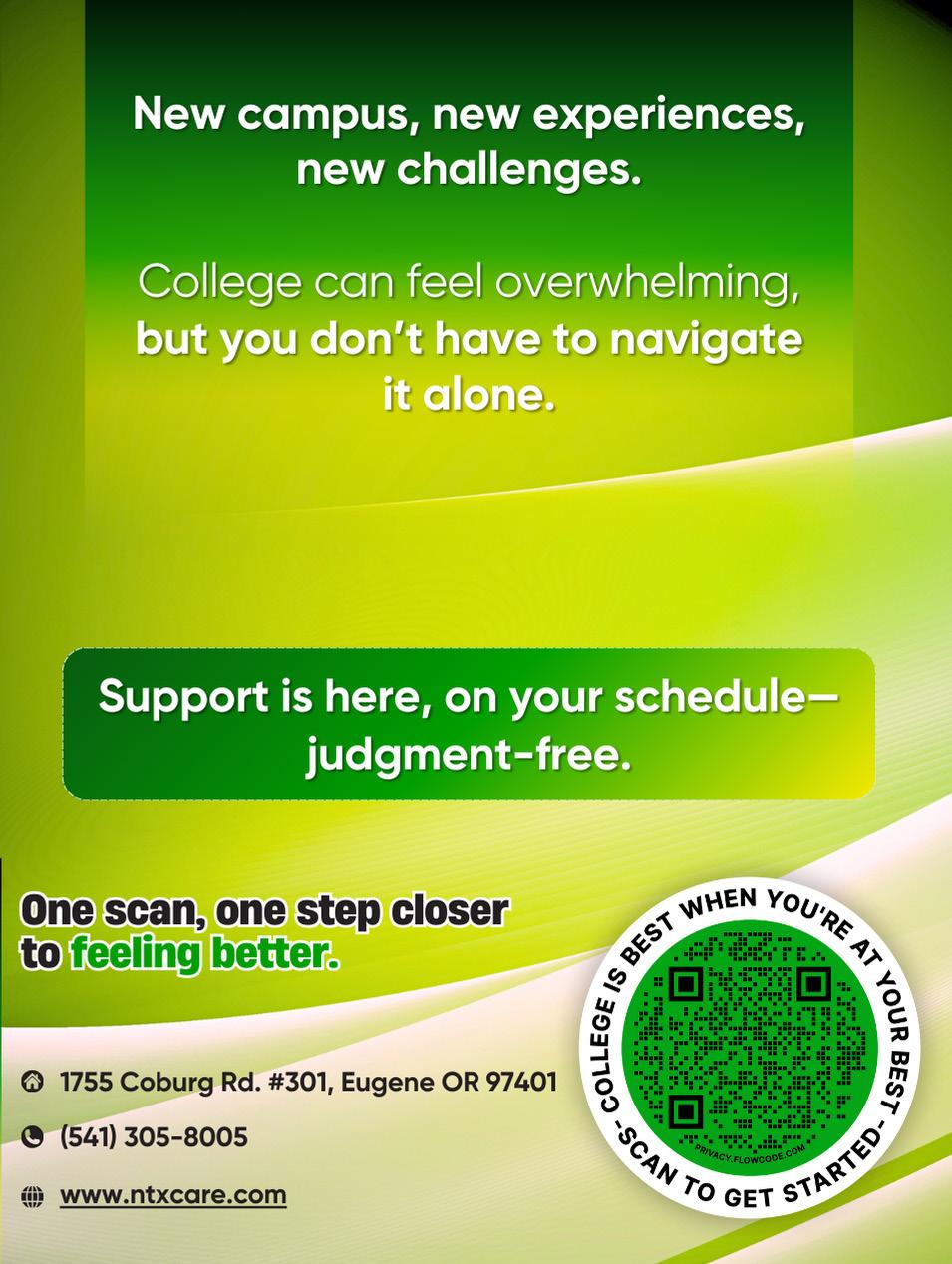




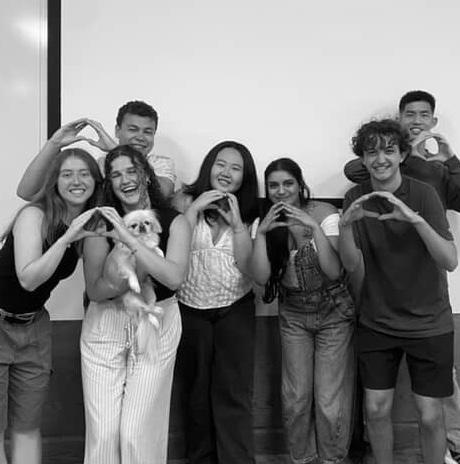
Continued from page 1
In accordance with the 2025-26 ASUO budget book, the forensics program had previously been allotted $174,606 as part of the approved Incidental Fee budget, a 30% increase in funding.
The Incidental Fee is a student fee funded by tuition. Jacobsen attributes the spike in funding to an overall increase in the cost of travel and tournament expenses and to “help match other funds in the forensics operations fund to hire a mock trial coach as an UO employee, not just a contractor.”
“We have asked, where is that money? What account is it?
Trond Jacobsen Head of forensics
In the year 2024-25, between mock trial and debate, approximately 65 students went to at least one tournament, out of a total membership of 75-80 students, Jacobsen said. Last season, mock trial competed in ten tournaments and debate competed in seven.
Jacobsen was unable to provide the official roster for Mock Trial and Debate, for last season, and had to reconstruct participation and travel numbers.
“The dean’s last minute decision, reached without any consultation, is an effort to override the express wishes of the students and ASUO,” speech and debate member Masha Mironova said.
“The decision was a tough one because no one’s arguing about forensics’ value,” Dave Austin, senior director of communications at CHC, said. “The president (and) the provost said our budget is not good, and that responsibility falls on the deans and the administrators at the entire university.”
Since forensics was cut, the club does not have access to the funds that were “previously promised to us last school year,” Haley-Ray Newbore, mock trial vice president of instruction, said.
In an email correspondence between Dean Carol Stabile
Photos courtesy of Mock Trial
of CHC and ASUO, both programs are eligible to become registered student organizations, which would allow them funding. In the email Stabile indicated that the money would be returned to ASUO.
Austin confirmed that the funds had been returned to ASUO and that the funding still exists for the two programs.
“ASUO has given us no indication that they want to take that money away from those two groups, nor has anyone else in the administration,” Austin said.
ASUO’s Department of Finance committee was unable to “provide further clarity.”
“DFC is actively working to enable forensics to compete this year and ensuring that those funds are accessible for students,” Bella Hoffert-Hay, senate seat nine on the DFC, said.
Forensics students are “totally in limbo right now,” Jacobsen said, as they are no longer departmentally-housed in the CHC or student-registered organizations. As a result, access to funding is unclear.
“We have asked, where is that money? What account is it? As of the last reckoning, we were told that it’s still in the forensics department account, but no one could tell us, is it there for good?” Jacobsen adds.
All events and competitions have been cancelled following the program’s elimination. Students who make up the programs can work with ASUO to reinstate these events, according to a statement by UO spokesperson Eric Howald.
Administration attributes the program’s elimination to CHC budget reductions, in relation to the $25-30 million budget deficit affecting the institution at large. UO’s forensics program served 59 students in the spring, with the majority being non-CHC students.
“In the current financial crisis, these resources must be directed more fully to Honors College students,” Howald said.
The university, through ASUO funding and CHC support, spends an estimated $6,100 to support each forensics student, according to a CHC Estimate. CHC administration cited the estimated cost as a factor in their decision to end support.
“It is patently unfair to use Honors College Student differential tuition to pay for a student organization that is mostly non honors college students. And I at the end of the day, I don’t know how anyone can poke a hole in that argument,” said Austin.
The forensics department had three main funding channels, according to Jacobsen: ASUO, which contributed to travel expenses, CHC which provided the salaries to forensics staff and multiple small endowments made by alumni.
The endowments are only accessible if the program functions as a department, not as a student-run organization.
The salaries of forensics staff are funded through the additional $3,036 in tuition that CHC students pay each year. CHC’s combined funding for forensics faculty was approximately $180,000, in FY25, according to the Clark Honors College Administration statistics.
Austin said that the majority of speech and debate and mock trial teams not only operate, but thrive as student-run organizations:
“UCLA, USC, University of Washington and other similar schools, similar to UO, are some top notch schools. When they’re run as student organizations, they seem to have quite a high level of success. I think it can be done.”
Looking exclusively at the Big Ten, the overwhelming majority of debate organizations are departmentally housed and/or have a paid director position, according to Austin Thomas, director of forensics at University of Wisconsin-Madison.
Mironova said the limitations of becoming an entirely student-run organization include the inability to hire coaches, no single oversight entity to ensure continuity and extensive pressure on student leadership to manage club activity.
UO forensics has existed in an institutional home since 1920, Jacobsen said, making it increasingly challenging to adopt an entirely new structure with minimal planning time.
“Even if one acknowledges that there are modest budget savings this year… they can’t be large enough to justify doing this to the students instead of waiting until April, giving us time to try and work,” Jacobsen said.
Despite the circumstances, mock trial and debate leadership is confident for the program’s future.
“We are hoping to keep our season exactly the same despite our cuts. Our goal is to reestablish ourselves within the university, attend all of our tournaments this year and regain our funding,” Newbore said.
Mironova said the debate team’s next steps include continuing practicing and preparing for future tournaments in the case the decision is reversed.
“I think this decision was a poor decision made in the wrong way. And as they learn more from the students, from student government (and) from the alumni, I do believe the administration will conclude that they should make a different decision,” Jacobsen said.
UOPD welcomes Daisy, the force’s second four-legged friend.

By Corey Hoffman Senior News Reporter
In September, the University of Oregon Police Department added a second furry friend to the force.
Daisy, a one-year-old comfort and therapy dog, began working with Officer Rebekah Galick in June and officially joined the force in early September.
“Daisy is just a fun-loving dog. She wants to meet everybody and every animal that she comes in contact with. She just is always interested in what people are doing, what’s going on and she just wants to be part of it all,” Galick said.
Daisy’s main job on campus is to provide comfort during difficult situations, whether it’s for someone having a rough day or responding with Galick to calls.
“Whenever we respond to calls, there’s typically a witness and there’s a victim, so when we’re getting statements from people, (it) sometimes can be re-traumatizing as you’re reliving that to give information to an officer – so she can be there to support someone through that,” Galick said. “If there is something a little more serious, where someone is having maybe a mental health crisis, she can be there to help support them too.”
According to Galick, the idea of a comfort K-9 is a “newer concept” that she jumped at the opportunity to take when it became available.
“When I heard about the whole idea behind it and the ways that she can be utilized, I really loved the idea, and when I met her, I (was like) ‘okay, I’m putting in for this, I definitely see myself doing something with this role,’” Galick said.
Daisy, a black Labrador golden retriever mix, came to UOPD through a nonprofit organization called Working Dogs Oregon, which trains dogs to provide services to law enforcement, fire de-
partments, veterans and people in need.
Several of the Ducks’ eight freshmen have earned increased roles, but the team’s 0-2 weekend proved that growing pains are inevitable.
in total attacks in three straight matches, middle blocker Holley McFadden leading in blocks in three of the six Big Ten matches and libero/defensive specialist Reese Sheppard garnering praise from Kersten for her serving after both the Iowa and Washington matches.
It is an excellent development for the future of the program, but a reason for Kersten to expect growing pains that can be enough to lose a match.
Although the losses showed that the team still has a long way to go in building cohesion and consistency, several of the freshmen maintained their breakout performances from the weekend before.
Clemente, amid the team’s struggles, recently moved into the team lead in hitting percentage with a .317, ahead of previous leader Valentina Vaulet’s .292.
In the fifth set against Iowa, Clemente followed her own kill and fought off a match point with an excellent threeserve run. When he was inevitably asked about her development after the game, Kersten credited the experience she gained in the first weekend of Big Ten play.
“That moment was huge for her career, not just this year. Having the confidence to go back down by one after the performance she had at Illinois, like she didn’t serve well against Illinois, and we let her keep going to try and grow through it, and tonight she was more ready
for that moment,” Kersten said.
Even in a down offensive match against Washington, in which Clemente hit .156, she found other ways to make an impact, recording four service aces and four blocks.
Kersten had similar rave reviews for McFadden and her work ethic after the Ohio State game.
“She’s the first person to text me each week like, ‘Hey, when can I come in for 10 minutes of video with you?’ You know, ‘how can I maximize my 20 hours that I get this week?’” Kersten said. “For a freshman, she is taking such ownership of her own development right now, and I’m so proud of her for that.”
McFadden has led the team in blocks three times in Big Ten play. She also demonstrated flashes of higher offensive potential, posting eight kills on 12 attacks against Northwestern and seven on 12 against Iowa.
Sheppard has fallen into a complementary role behind fellow freshman Natalie Fukumoto, who has held the starting libero/defensive specialist spot since the beginning of the season.
Sheppard is coming off a career match from the service line against Washington, sparking 8-0 and 5-0 runs in the first set alone.
“The first set was so much about Reese from the service line. She went on two huge service runs for us and forced them out of system a lot, and then we were able to execute,” Kersten said after the match.
Fukumoto has earned a massive opportunity to gain experience as a freshman, playing in 59 out of 62 sets and sitting 20th in the Big Ten with 140 digs. Following the Ohio State game, she credited the other freshmen with motivating each other as their roles increased.
“We really push each other every single day. We all know
Daisy received formalized training through the nonprofit, but will continue to train with Galick in the coming months.
“We are actually, just her and I, going to go through another formalized training just because there is a bond that gets created when you do the training,” Galick said.
A typical day for the pair varies depending on campus activities, with Daisy accompanying Galick on calls. According to Galick, a day isn’t complete without a game or two of fetch.
“What’s happening on campus that day dictates what we do. Sometimes there are special events that I know are occurring, and we’ve done some meet and greets to try to introduce her to our campus community so everyone knows what she’s about and knows that if they see us on campus, they can ask and say ‘hi,’” Galick said.
Galick said the campus community has “welcomed (Daisy) with open arms,” and with over 700 followers on Instagram, her celebrity status is growing.
“When I get those comments that are similar to the effect of ‘I really needed this today’ or ‘that just solved a lot of my problems,’ just a minute with Daisy and that’s why she’s here,” Galick said.
Galick encourages students and people on campus to come up to Daisy, whether they’re having a bad day or just want to say hello and pet a dog.
“We all have something every day that just occupies our minds, and we just need a mental break, and sometimes it can be ‘I’m having a rough day and I just need a dog.’”
that we’re young, and we all know that maybe on paper we’re not supposed to win a couple games, but we are showing up every single day, pushing each other, and just seeing how far we can go,” Fukumoto said.
Oregon will host its two highest-ranked opponents of the season in the fourth week of Big Ten play, with No. 18 Minnesota visiting on Oct. 17, followed by No. 17 Penn State on Oct. 18.
It will be a new test for the eight Ducks who were facing high school players a few months ago, but it will be valuable experience for Kersten’s continued focus on building his Oregon program.
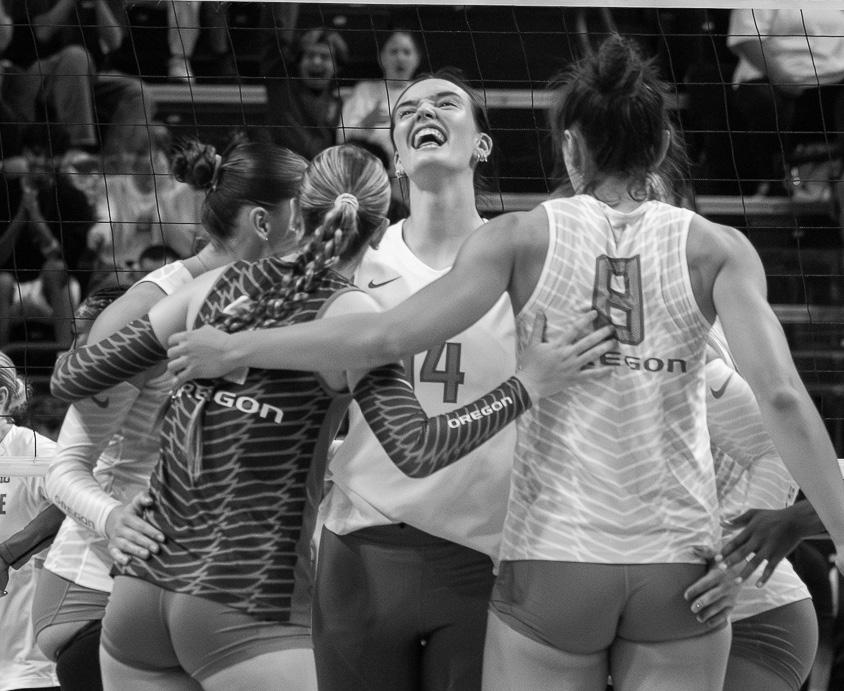





















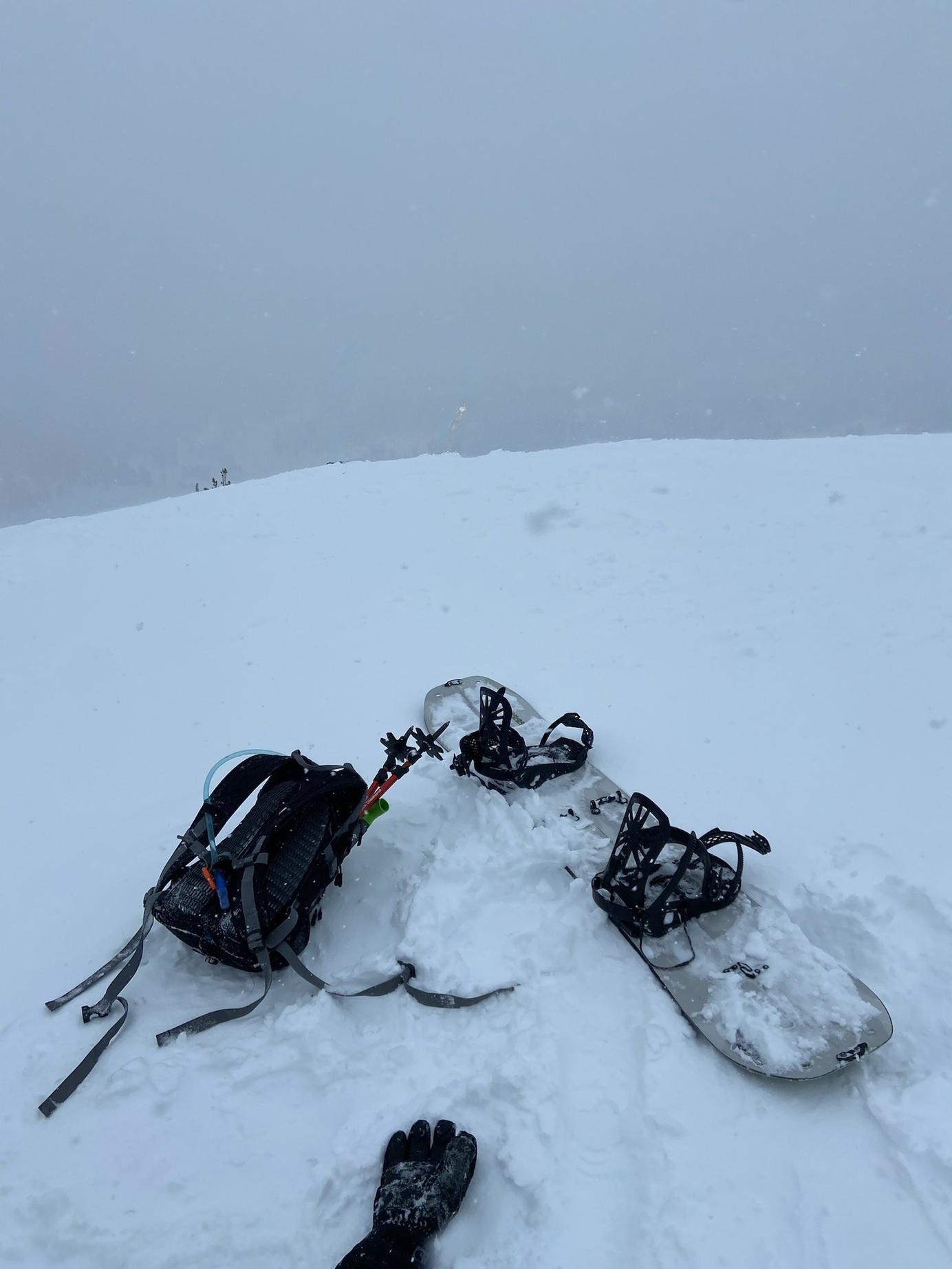

of thousands of Oregonians will lose food and energy assistance in the coming months.
By Sasha Love Senior News Reporter
Over the next three months, around 313,000 Oregon adults may be impacted by additional eligibility and work requirements to receive Supplemental Nutrition Assistance Program benefits — better known as SNAP — according to the Oregon Department of Human Services.
The list of people who will lose benefits includes refugees, people granted asylum in the U.S., parolees and several other immigrant groups.
In January 2026, work requirements may also be enforced for Oregonians with teenage dependents, older adults, veterans and people experiencing homelessness. Six counties are already enforcing these requirements when residents apply or renew their applications.
For applicants who applied or renewed their applications in early July and beyond, the changes take place right away. For those who already have been receiving SNAP since before early July, the changes will likely go into effect in January.
Kali Kleven, vice chair of Oregon State Public Interest Research Group students and Zero Hunger campaign coordinator said she felt the SNAP changes didn’t represent the public interest of Oregonians.
“Nobody is sitting there saying, ‘Oh yeah I wish people would go hungry,’ and that money (that was funding SNAP) should go to things that Oregonians want to happen,” Kleven said.
She also said Oregonians may be facing confusion due to the complex new rules.
“There is a lack of communication with what resources are available and I think food assistance is something that people can feel really insecure about asking for help for and having those resources being hidden can be really hard,” Kleven said.
Among the most impacted by the changes in H.R. 1 are refugees, people granted asylum and certain other lawfully present immigrants.
Zoë Livelybrooks is a refugee and immigrant services program volunteer coordinator for Catholic Community Services of Lane County. Her work focuses on helping community members and their families become self-sufficient in their day-to-day lives.
“For our clients that are eligible (for SNAP), I think it’s been really key for them as they’ve been going through this transition and as we’re helping them look for work,” Livelybrooks said. “It has been really crucial for them to have that extra support to make sure they can afford food.”
She encouraged residents to rely on other food pantry networks in Lane County, but sees the potential for extra stress on these resources as SNAP eligibility tightens.
“I think we do have a lot of other good resources in the community. Whether those are faith-based organizations or just other groups that are doing their bit to combat hunger,” Livelybrooks said.
Livelybrooks said keeping the people they serve up to date has been “really tricky” because RISP is constantly learning new information from ODHS.
“We are still in a place where we have not been given enough information to know exactly which of our clients will be impacted and when,” Livelybrooks said. “It has been frustrating because I think there has been a general lack of clarity.”

Eugene’s chapter of Easterseals, an organization that provides essential services to people with disabilities and veterans, could also be affected by the new eligibility requirements.
Tom Larrañaga, an Easterseals homeless veterans re-integration career navigator, said uncertainty is trickling down from the federal level.
“We are all in the same boat. We don’t know what tomorrow is going to bring,” Larrañaga said. “The government is tying our hands up and we’re screwed.”
ODHS said the changes in SNAP eligibility could also have effects on local businesses and the Oregon economy.
“Local grocers, farmers, food distributors and the people working for them also lose business when fewer people can afford food, which decreases the dollars going into Oregon’s food economy,” an ODHS spokesperson said in a statement to The Emerald. “Every $1 in SNAP benefits generates $1.50 to $1.80 in local economic activity. SNAP drives an estimated $1.6 billion into the Oregon economy each year.”
The UO Basic Needs program supports students with applying for SNAP and offers other resources to address food insecurity that do not require SNAP eligibility. These include food pantries, a produce drop and a program called Textover Leftover where students can take home uneaten food from UO events.
UO Basic Needs declined a request for an interview but said “UO is waiting for further guidance on how the SNAP benefit changes will affect students who are part of the program.”
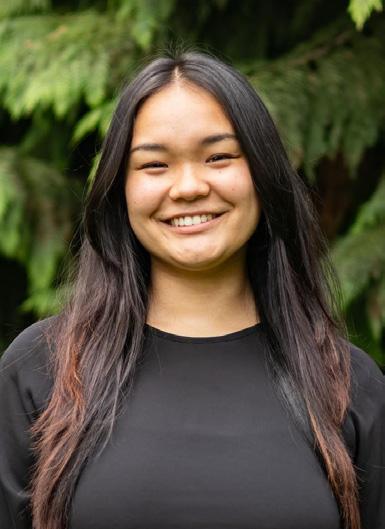
Catalina Kurihara is a third-year political science and public relations double major with a minor in science communication. In her free time, Catalina loves deep diving into pop culture and spending time with her dogs.
By Catalina Kurihara Opinion Columnist
From author to audience, everyone has a role in shifting the discussion around domestic violence. And that shift starts here, on campus.
Let’s ask ourselves:
What does leadership look like at UO? What does strength mean in the context of real relationships, not just slogans or sports? How do we misconstrue the real meanings behind strength and leadership?
These answers often live in silence – the kind that surrounds domestic violence.
As a starting point, domestic violence is not just a private matter. Domestic violence is a hidden public health crisis, and it’s affecting college students every day.
Prevention courses are not only for you to learn how to keep yourself safe, but also a subtle warning to the statistic that “the most common age range for intimate partner abuse victims is 18-24. The risk of being targeted by an abuser is high during college-age years, and starting this discussion is crucial.”
Domestic violence, as defined by the Mayo Clinic, “happens between people who are or have been in a close relationship. This type of violence can take many forms, including emotional, sexual and physical abuse, stalking, and threats of abuse.”
Have we ever treated domestic violence with
the same level of urgency as any other legitimate threat to public health?
Well, now it’s time to start.
In the U.S., more than one in three women and one in four men aged 18 years or older experiences domestic violence within their lifetime.
These are not strangers in statistics. These are our friends, our classmates and our roommates. Maybe even you.
And during the pandemic? The numbers got worse.
Recent studies suggested that a “shadow pandemic” hid behind the spotlight of COVID-19. Lockdowns, isolation, quarantines and financial stress worsened abuse, while simultaneously cutting off access to support systems.
How has that impacted our understanding of healthy relationships now?
Drew Terhune Sirman, director of Care and Advocacy at the University of Oregon, put into perspective the beginning stages of isolation and eventually emotional abuse.
“It’s a common narrative to hear that a partner struggles with their mental health. This prompts us to lower our own boundaries because we want to be caring and responsive to their needs. The functions of those behaviors, though, are to isolate us,” Sirman said.
“Well, why did they stay?”
This is one of the most frequently asked questions in domestic violence, but it’s the wrong question.
The more important question is, “How can I support you now?”
It is critical that we, as a community, learn to sympathize with the terror of domestic violence instead of investigating for our own personal understanding.
It does not matter why someone stayed, but we must recognize the strength it takes to ask for help now.
Statistically, a person will try to leave an abusive situation seven times before actually being able to leave their partner for good. One of the reasons for this is that leaving a domestic violence relationship is the most dangerous phase of the relationship in its entirety.
Approximately 75% of intimate partner homicides happen when a survivor is attempting to leave the relationship or has left.
So, the answer to the frequently asked question, though no one owes it to us, is fear.
“Feminism isn’t about making women strong. Women are already strong. It’s about changing the way the world perceives that strength.”
G.D Anderson said.
A common thread in domestic violence cases


is internalized stigma. Survivors often cite guilt, fear of consequences and shame as reasons to stay. These feelings are not character flaws; they are trauma responses.
Yet, we don’t shine a light on the impacts domestic violence has on a person’s sense of self. That ends here.
Hannah White, assistant director of Care and Advocacy at the University of Oregon, said survivors often experience self-blame.
“One part of this stigma is a sense of internalized blame. When people start to feel smaller and things happen again and again, over time, people often feel like, ‘Well, I let this happen. I don’t deserve help. I’m doing this to myself.’ And that is just not the case.” White said.
College can feel isolating already, and when someone is in an unhealthy or abusive relationship, that isolation deepens. The last thing a survivor needs is judgment from their peers.
Sirman emphasized that supporting friends in unhealthy relationships takes patience and compassion.
“When folks talk to their friends about relationships that might not feel healthy or super safe, a very understanding feeling often manifests; you want your friend to leave that person,” Sirman said. “You want them safe. You want them to be treated better. You want them to leave.”
Sirman continued, “The harder you hit that point, though, the more likely your friend is to feel judged if they’re not ready.”
Instead, offer care without conditions.
“The sweet spot you want to land on is to be able to express your concerns and end with an affirmation that your job is to be there for your friend. And if they choose to stay, you’re there for them.”
“Hannah and I can support friends who are supporting survivors, too, as a part of our role at UO. It can be really hard to do, so just know you aren’t alone,” Sirman said.
This is what leadership looks like on campus: not lecturing or abandoning friends who are struggling, but being present without conditions and knowing help is around the corner within the community.
What does leadership really look like? It doesn’t always mean student government or clubs. Sometimes, it looks like calling out a joke, checking in on a friend or just not letting silence win.
A leader is someone who uses their voice when others cannot. They don’t protect the status quo; they protect people.
In our songs, in our movies and in our lives, we see abuse, and it’s time to call a spade a spade.
On college campuses, the numbers are especially sobering.
Just know you are not alone, and help is available.
At UO, resources exist to support friends, students and those experiencing violence themselves. See the Care and Advocacy Program for additional support. You don’t need to have all the answers to reach out. You just have to care.
Administrative Program Assistant of the Women’s Center Karyn Schultz spoke on the Women’s Center and its role in Domestic Violence Awareness Month.
“The Women’s Center is here to support students who have experienced violence by getting them in touch with the right people. But that’s not all we do,” Schultz said. “Here at the Wom-
24 people per minute on average are victims of rape, physical violence or stalking by an intimate partner in the U.S.*
52% of college women have reported knowing a friend who’s experienced violence and abusive dating behaviors, including physical, sexual, digital, verbal or other controlling abuse.*
en’s Center, we offer a safer place with peace and listening.”
Redefining Strength at the University of Oregon
Strength isn’t silence. It isn’t suffering. It isn’t doing everything alone.
Strength is surviving. Strength is asking for help. Strength is to support someone when they’re not yet ready to leave.
A survivor is strong in their choices, in their survival and in their endurance – mentally, emotionally, and physically. It’s time the world saw that, at UO and beyond.
This month, we speak up and show support, even if you haven’t before.
Oct. 1 marked the beginning of domestic violence awareness month, and it’s about time we give it the attention and care that it deserves.
That all starts with you.
Be a leader on campus. Speak up and show strength.
57% of college students say it’s difficult to identify dating abuse.**
(Aaron
(
(Maddie
736 million
women and girls globally have been the subject of sexual and/or physical violence perpetrated by an intimate partner, non-partner sexual violence or both at least once in their lives.**
*According to the National Domestic Violence Hotline
**According to unwomen.org
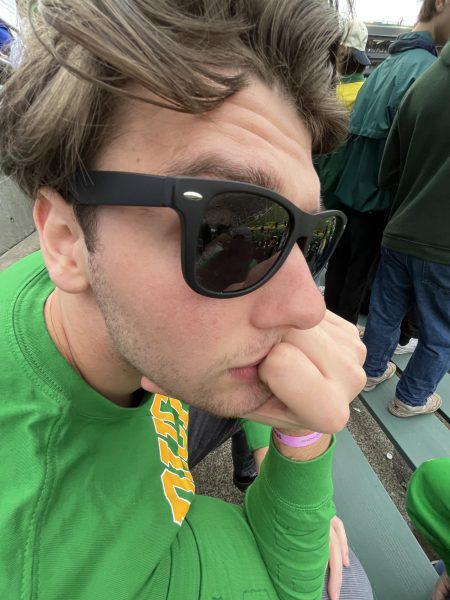
David is an opinion columnist for the Daily Emerald and a senior studying data science, economics and philosophy. In his writing, he enjoys finding the abstract relationships between systems and the decisions we make everyday, weaving them into a tangible story readers can easily digest.
Opinion: It is strange that as it becomes more accessible to apply to jobs and internships, it becomes harder to get one.
By David Mitrovčan Morgan Opinion Columnist
As we edge closer to winter, darkness begins to seep in: a mixture of a sun no longer entirely committed to showing up, the rain finding its rhythm alongside the clouds which accompany it and the exhausting drudge of job applications. It truly has become part of the college experience.
Josh Nguyen, who graduated from the University of Oregon last year, remembers that gauntlet well. During his senior year, while searching for a job for post-graduation, he filled out “somewhere around 200 to 300 applications.”
“It was grueling, and hard,” he told me, recalling the long nights spent tailoring résumés and submitting application materials to portals that all blurred together. “I sent at least one to five a day – 10 to 30 if I had the energy,” Nguyen said. When online job applications first appeared, they were heralded as a revolution in access – a way to level geography, timing and connection. Anyone, anywhere, could send a résumé into the digital ether and be seen. Yet, each position now attracts hundreds, sometimes thousands, of hopefuls. The flood of access has drowned the
very meritocracy it was meant to create.
Recruiters, buried under the deluge, reached for the good old reliable: referrals. The adage “it’s not what you know, but who you know” continues to hold true. In 2023, an analysis of 4.5 million applications found that referred candidates were 7x more likely to be hired. Nguyen’s story was no exception; he got his current job through a referral.
This isn’t favoritism so much as institutional self-protection. The system can no longer build trust through the application process due to sheer volume, so it must import it from elsewhere.
We’ve all felt the result; that small sting of indignity when the rejection arrives three minutes after you hit submit and you know the only one who saw you was a machine. Worse still is when there’s nothing at all: no reply, no acknowledgment and not even the decency of a no.
So what can we do about it? Maybe not as much as we’d like, but enough to make the process a little fairer, a little kinder and a little less mechanical.
First, referrals shouldn’t be the golden ticket they’ve quietly become. Everyone deserves the chance to be judged on their own merits before connections enter the equation. A better system wouldn’t abolish referrals, but delay them until after the first round of interviews, ensuring that connections confirm quality rather than substitute for it.
We should also be honest about what’s real. “Ghost jobs” are postings created with no intent to hire, but project growth or collect résumés for later, and ought to be banned. They waste time, inflate applicant numbers and erode what little
trust remains between applicants and employers. Finally, a simple but long overdue fix: a feedback mandate. Employers should be required to provide at least automated reasons for rejection, like skills mismatch, position filled or incomplete materials. Those words cost very little and provide dignity to applicants.
As Oregon settles deeper into winter, the sun will become ever less present, the rain will keep falling and students will keep applying. Maybe though, with enough intention, the application process doesn’t have to feel so cold. As application season gets underway, it’s important to remember that behind every résumé is a person still waiting, hoping to be seen.
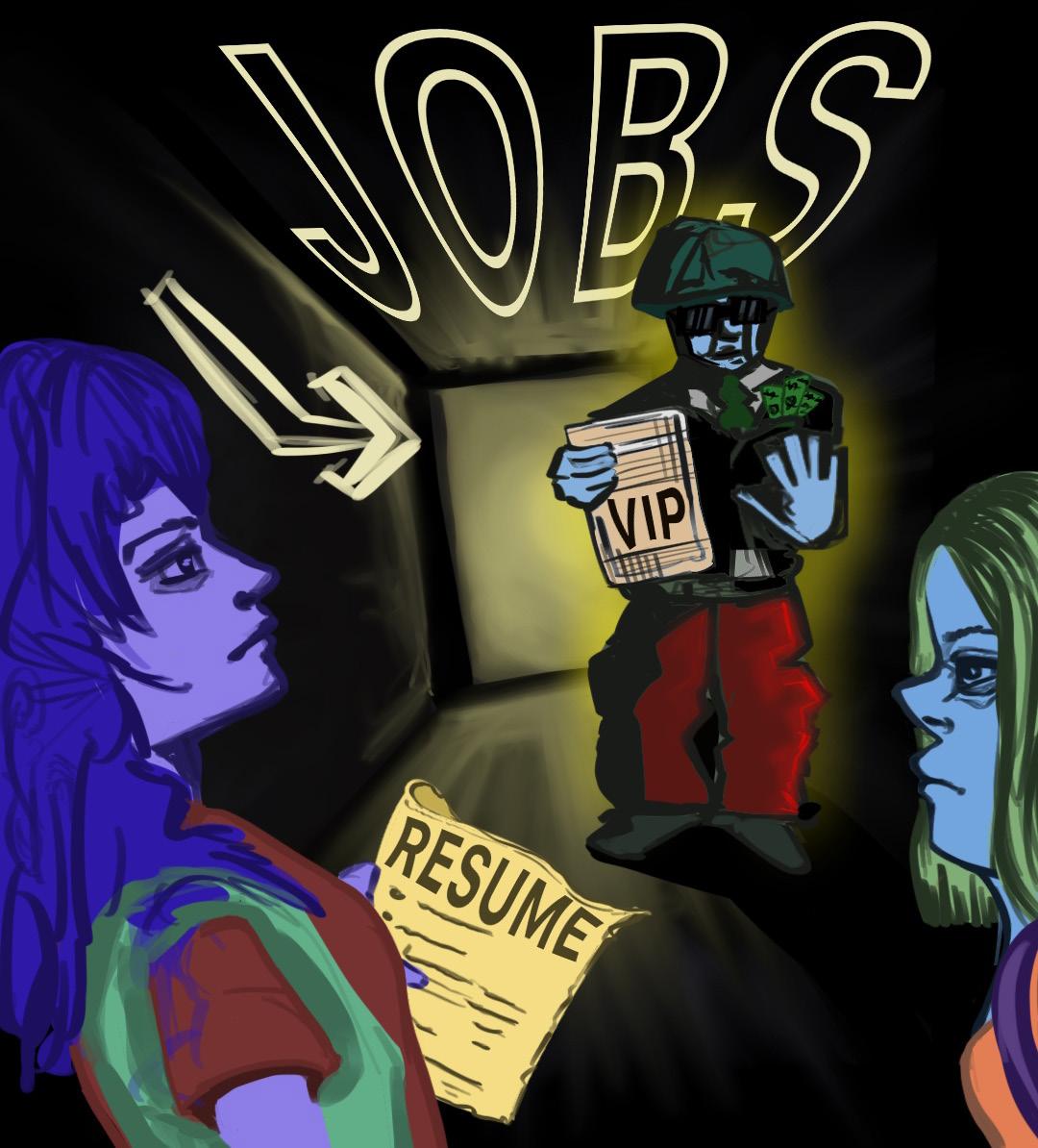
Opinion: “Weeder classes” thin out a field’s student population, especially in difficult and desirable career paths, but are they a bad thing, or do they lead to more opportunities?
By Zaida Ferguson Opinion Columnist
When incoming freshmen apply to UO, they usually pick a major they hope will be their future career path: mathematics, business, pre-med, etc. But sometimes, students realize their desired future career path is a lot harder than expected. Why is that?
Urban Dictionary defines a ‘weeder class’ as “a class (typically in college) that is characterized by having a large dropout rate due to rigorous expectations, such as hard tests, impossible studying requirements.”
For example, pre-med students are expected to take difficult courses like organic chemistry, along with high-level physics and math courses that are notoriously hard to pass for most students. This causes many students to switch to a different major, in hopes that they will sill be able to have a successful career in a different field. As a result of the difficulty of these classes, they earn the title of a “weeder class.”
A “weeder class” can be detrimental for some students. Imagine taking a required class for your major, using every resource: tutoring, office hours, study groups – and still failing. It’s not because you didn’t care or try hard enough, but because the class was meant to kick at least some people out.
Some students, like Shamica Tendolker, a business major who decided to pursue these classes, said, “I feel like they rush through material and you don’t get the actual learning experience that I would in my smaller classes. “Weeder classes” are really test-heavy, and if you’re not a great test taker, I feel like it makes or breaks your grade in the class.”
These courses don’t exist in every major, and not every student recognizes them. When I asked students at UO about their experiences, some responded with confusion: “What’s a weeder class?” It was very refreshing to hear that not all students are faced with this issue.
There are good things and bad things about the concept of “weeder classes:” they’re competitive, they really push you to learn the material and they make sure everyone in those courses is dedicated. On the other hand, if you do decide to change your major late in your college career, you might not graduate in four years and will end up paying for more classes and tuition than anticipated.
David Peterson, a former physics major turned English major at UO, said, “I think they bear more benefits, as they help students, me specifically, rethink what they want to achieve and complete at college. If a student wants to keep persevering through a “weeder class” despite the challenge, it must be something they truly want to do with the rest of their life.”
Although it can be tough to completely change your major, it might work out for the better.
Peterson said, “I took a physics class, and I guess it could’ve been considered a “weeder class”, and I’m honestly glad that it made me rethink things. I feel much better as an English major.”
Changing your major isn’t always easy – especially after you’ve invested time, money and a lot of your undergraduate identity into one particular field – but for some, it could lead to a career path that’s better suited for them.

Zaida is an advertising major with a minor in philosophy and business at the University of Oregon. She’s passionate about storytelling that amplifies underrepresented voices and critiques systemic issues.















‘The Life of a Showgirl’ is here, but was it worth the wait?
Taylor Swift released her 12th studio album, “The Life of a Showgirl,” on Oct. 3, 2025. This album was highly anticipated and brought both fulfillment and disappointment to many.
By Everette Cogswell Arts & Culture Writer
When Taylor Swift announced her 12th album, “The Life of a Showgirl,” it practically broke the internet. After her 21-month-long record-breaking “The Eras Tour” ended, many fans were wondering what would come next for Swift. As whispers of a new album floated to the surface, Swift revealed “The Life of a Showgirl” via her fiancé Travis and brother Jason Kelce’s podcast “New Heights” on Aug. 13, 2025.”
Like most things Swift does, the release of this album has brought a lot of opinions among fans and nonfans. “I have not listened to the new Taylor Swift album because I don’t want to,” UO student Lara Clute said. “When she got super big and started making her own Taylor’s versions, I kind of started having a more negative connotation towards her.”
For this album, Swift worked with Max Martin and Shellback, producers whom she worked with on her previous albums “Red,” “1989” and “reputation.” Since those albums, Swift has worked very closely with producer Jack Antanoff; with the transition back to Martin and Shellback, many expected this album to have similar energy to her earlier releases.
“The Life of a Showgirl” begins with the pop-centric
song, “The Fate of Ophelia.” This track sets the tone for the rest of the album nicely, and is a pop ballad similar to the songs on “1989.” As Swift has been releasing more and more music, her discography is beginning to sound very similar and raise conversations about quality over quantity.
This album is nothing new and revolutionary compared to previous work from Swift. “In most ways, it is a predictable continuation of her catalog: There’s personal memoir with a veneer of poetic license, a pretty obvious diss track, an extended meditation on memories from high school, a touch of Shakespearean drama and a singular focus on romantic love and a happily-ever-after that’s happily ever closer,” Anna Gaca, senior editor at Pitchfork.
With that being said, Swift still has an influence on millions of people and fans. As one of the most successful female artists, she is a big inspiration to many listeners of her music. “I feel like she is one of the best artists of our generation,” Teagan Brown, an advertising major from Newport Beach, California, said. “I can see why people think otherwise, but she’s fun. I don’t see anything wrong with her; I love her.”
The track “CANCELLED!” has gained traction for its “millennial” lyrics such as “did you girlboss too close to the sun,” and “I like ‘em cloaked in Gucci and in scandal.” This is a theme throughout the whole record. Lyrics feel unre-

latable to a large audience of her listeners, and it creates a generational gap between Swift and her fans.
“In a time and a place where there are some pretty awful people out there not getting repercussions for the terrible things they do out in the open, this is a very strange song to release. It’s very out of touch and tone deaf,” Anthony Fantano, music reviewer and writer for The Needle Drop said.
The title track, “The Life of a Showgirl,” featuring Sabrina Carpenter, feels like older music Swift has put out, with a more storytelling style of songwriting. Carpenter is a large redeeming quality of this song and is a nice way to end this album. There is no doubt that Swift is not done yet. Following the release of this album, she shared “The Fate of Ophelia” music video, choreographed by Mandy Moore, which has a very high production quality and does a nice job of painting the vibe for this album. “The Life of a Showgirl” certainly won’t be the last time we hear from Swift; she always has something else in store.
Opinion: The beauty of UO’s school spirit is that it includes way more than just the diehard fans. It invites everyone to be a part of something.
By Emma Kahl Opinion Columnist
Back on Oct. 11, when ESPN’s “College GameDay” made its way to Eugene, I grabbed dinner at Dave’s Hot Chicken and saw groups of students decked out in their UO gear. They were making their way to campus to wait all night long in the cold, just for a spot in the soon-to-be crowded pit. How crazy.
Although I’ve never really been a football fan, there’s still a lot of pride that comes with being a Duck. Since starting at UO, I’ve found myself checking scores for games I would have never previously considered going to. I almost feel like I’m part of an exclusive club.
What makes UO sports culture so unique that it gets people who couldn’t care less about sports into the spirit? There’s a buzz and excitement that comes with being a Duck that is sort of unexplainable unless you’ve experienced it.
The Emerald’s live coverage of “College GameDay” stated that approximately 1,000 people were in attendance. At some point, our mascot, the Duck, showed up on horseback. If I hadn’t seen the photos, I wouldn’t have believed it.
UO junior and big sports fan Jonah Villegas described how our mascot is one of the unique aspects of UO’s sports culture. The Duck has become a widely known mascot, which allows fans to build loyalty and an emotional connection to it aside from the pressures of sports.
“Everybody seems to rally behind the football team, like not just in Eugene, but the whole state. I’m driving around and there’s Oregon stickers everywhere,” Villegas said.
Villegas mentioned how there’s a sense of pride

around being a Duck that transcends the school’s sports. Even non-sports fans can feel this pride from going to UO and being a part of the local community.
Senior Greta Svendsen said, “I just feel like UO is such a welcoming community in general, so I think that transfers over to sports.”
While Svendsen isn’t really into sports, she still keeps up with the scores of the games, is excited to go to games with her friends and keeps up with her other friends’ school teams.
“I just went through sorority recruitment, and I was talking to a lot of freshmen and pretty much all of them said that one of the main reasons they
came here was for sports and the school spirit. So I think it’s a big part of the school, and even though I may not care about sports, it’s still fun to be a part of it,” Svendsen said.
When talking to Svendsen, I realized that sometimes it’s less about the actual sport and more about taking part in shared experiences. The school pride, the Eugene and UO community and the infectious energy, combined, make for this great feeling of being a part of something.
So, whether you’re a diehard Duck fan or not the least bit interested, go out and sport your green and yellow with pride. There’s a place for everybody in the Duck community!
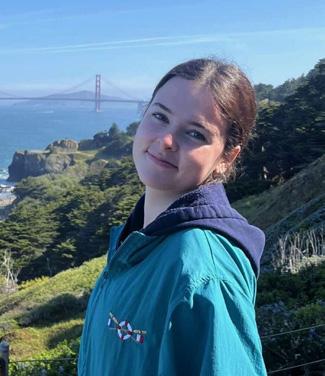
Emma Kahl is an opinion columnist for the Daily Emerald. She is currently a senior, majoring in written journalism and minoring in global studies. Her writing focuses on social commentary, culture and politics.
1 Possesses
___/her
Boat annoyances 15 Author Nin or Gumball’s sister
grabbing interjection
Vandalous 2021 TikTok trend
Notable elephant or rabbit feature
Advanced attorney’s deg. or AI language processor
Annoy
Appraise on Yelp
Label for vampires or mosquitoes
Smokey Bear announcements, for short
“Children ___” (school sign)
Genre prefix for many indie bands
Zone 1 hr after MST 32 Build, as a building
Long blade
Cycle of rebirth in Buddhism
“___ and Weep” (Disney Channel movie)
“___, open up!”
Business term that describes a service’s capacity to fail
U.S. narcotics org.
___-law (your child’s husband) 61 “___ U
45 Shein relative based in China 46 Liverpool bus


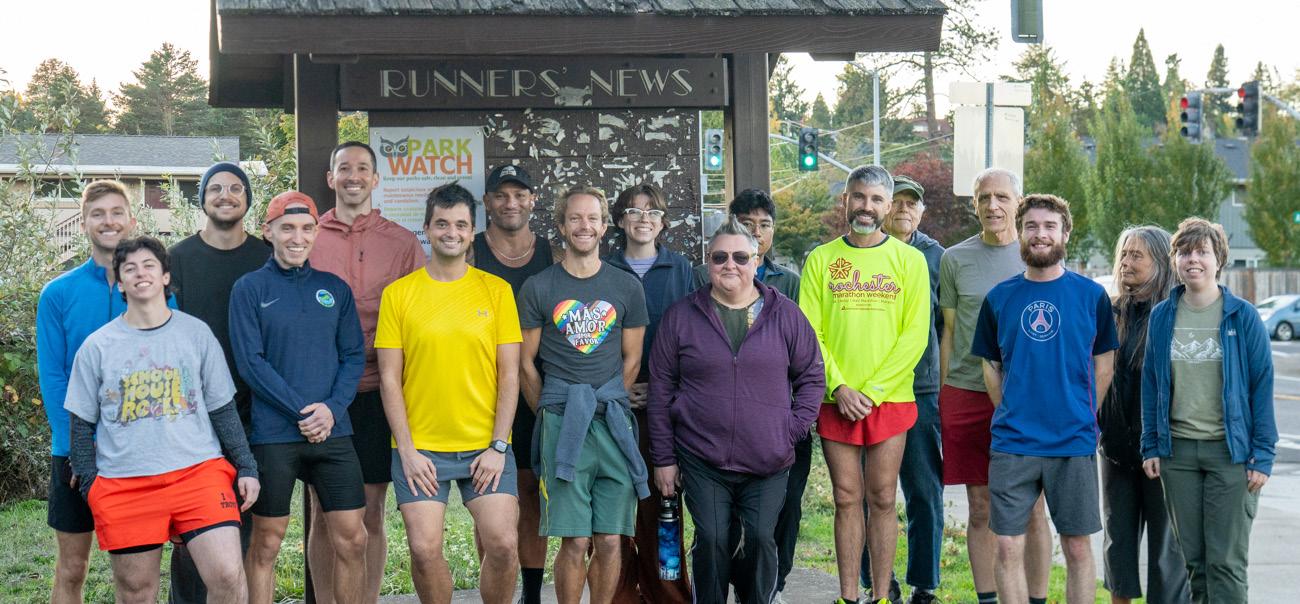
By Amelia Fiore Arts & Culture Writer
This October, the Lane Council of Governments is hosting a series of walking-based events throughout the county. They include group walks, challenges and strolls of all paces and environments, offering residents a chance to further explore the place they call home, while encouraging exercise and building community.
The series was inspired by May is Bike Month, which has been a Lane County staple since 2014, and was run by various local organizations until LCOG took over in 2022. A year later, they created a similar appreciation month to celebrate community and encourage exercise through walking.
Walktober is an annual, month-long series of walking events with 50+ group walks. There are also six self-led walks and 10 “DIY” walks, where you can use a provided map to learn about a designated landscape and move at your own pace. Most paths trail along local landscapes or historic buildings, but a few explore other areas of Oregon’s nature-rich areas, including a bird tour at Mt. Pisgah and a beach labyrinth and art walk in Florence.
But LCOG couldn’t do it alone. To cover such an array of events, they partner with several running and walking organizations already established in the area.
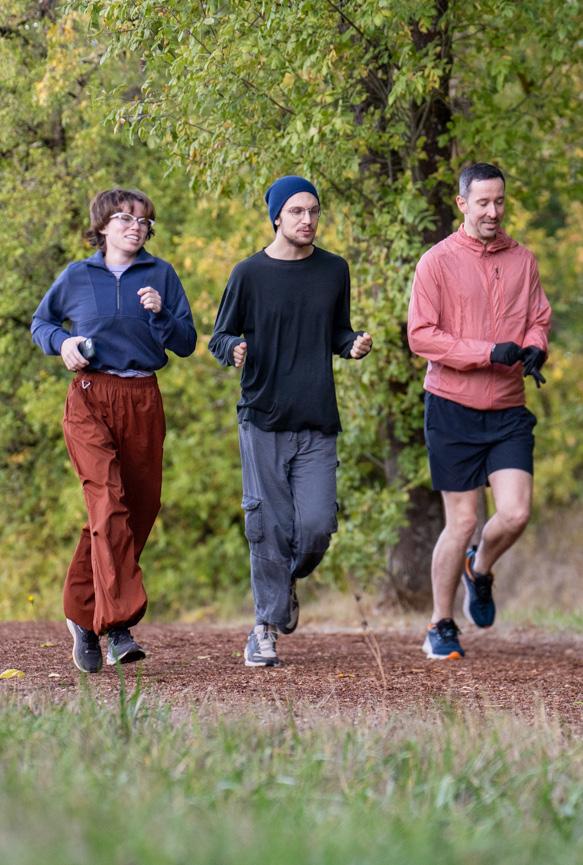
Julia Woolley, the transportation marketing specialist with Lane Council of Governments, emphasizes the importance of highlighting these groups.
“The majority of events are not run internally by us at LCOG, but by partner organizations,” Woolley said. “Some of the walks that you see on there (the calendar) are already happening regularly, and we’re just kind of trying to build attention and attendance to those events.”
A few local hosts include: the Cottage Grove Genealogical Society, Oregon Parks and Recreation and Springfield Mayor Sean VanGordon. Some community-run exercise groups, like Wednesday Wheelers, a group for wheelchair users to explore the trails of Eugene, also host Walktober events while being active year-round.
For promotion, LCOG planted hundreds of Walktober signs across Eugene, with many spanning across the UO campus. Local artist Erick Wonderly-Varela created Walktober 2025’s artwork, weaving together bold colors, flora and fauna and a splash of Eugene’s own eccentricity.
And although a plus, walking doesn’t only provide physical benefits.
“It can help you feel connected to your neighborhood and to other people, and (it’s) a good way to just kind of get to know what’s going on around you a little bit at a slower pace,” Woolley said.
One of the dozens of walking events was a tour of the Eugene Masonic Cemetery on Oct. 9. The cemetery opened in 1859 and holds the grave of its town’s eponym, Eugene Franklin Skinner.
One attendee, Chelsea George, found the event from the Walktober calendar on We Walk Lane County’s website. “I’m from here, but my partner isn’t, so I wanted to show them the history,” George said. She and her partner have attended other Walktober events and are excited to continue exploring.
Thanks to events like Walktober, Lane County residents can explore their area’s culture, history, art and community by simply taking the long route home. As for those looking to get involved, Woolley said, “We’ve got, you know, nature-focused walks, art-focused walks, (walks for) people who love coffee and tea. We hope there’s something for everyone.”
The show welcomed back former Eugenian Jeffrey Martin.
By Vincent White Arts & Culture Writer
A sold-out crowd filled the Unity of the Valley Church on Sunday, Oct. 12, to listen to the folk stylings of Jeffrey Martin and Anna Tivel. Martin, a former Eugenian, played a series of resounding, emotional music while Tivel played poetic, soft songs. Both played separate sets and performed solely with their voices and guitars, captivating the audience along the way.
In between songs, each of them would joke or tell anecdotes about their time on the road, and the crowd would laugh accordingly — but as the music began to flow from their strings, the audience would be dead silent until erupting into applause the moment the final notes rang out.
“We think a lot about just what it means to hold a space for people in the show,” Tivel said. “There’s all these ways that you learn over the years about how to be more open with yourself and with your emotions, and that creates an energy in the room the more you can just be who you are and inhabit your songs really honestly.”
While they do not write together and only perform at the same time on occasion, they both uphold a similar dedication to accurately representing their feelings in their songwriting.
“There’s something really compelling to me about seeing a real person do a real thing that they are passionate about,” Martin said.
While Martin often finds himself on tour or gigging around Portland, sometimes with Tivel and sometimes without, he did not perform for the entirety of September. Having already hit Edmonton, Vancouver, Bellingham and Portland on this tour, it is safe to say that Martin is back in the swing of things. His stop in Eugene was particularly potent for him, as he spent his middle and high school years in the city after his family moved from Texas.
“I grew up in Eugene; I had a lot of formative years there,”
Martin said. “I first started playing music at Cozmic Pizza.”
Cozmic, which has now been replaced by Whirled Pies, was an important beginner venue for Martin, as it continues to be for other musicians today.
“I always like coming back to Eugene,” Martin said. “I like taking a slow drive after the show and seeing how downtown Eugene looks different, if at all. It doesn’t seem to change a whole lot.”
Martin and Tivel have both been signed to Fluff and Gravy Records, a Portland-based folk label, for nearly a decade. Since then, they have both gone on numerous tours, with Tivel returning home from a tour opening for The Waterboys just days before their current one began.
“(Performing) shows (is) the world to me and allows me to be near people. I don’t know if I’m very adept at that in my life outside of music. To be able to move through the country and overseas and step into people’s communities where they’re just willing to hear you out and then share themselves never gets old to me. It’s always kind of pushing the boundaries of my person-ness. I really feel grateful for it.”
Martin believes in a similar sentiment and recognizes the personal benefits and utility of taking in one’s surroundings while making art. Of course, he also said he was simply in it for the money, because a love of making music does not necessarily mean the disavowment of dry humor.
“The thing that keeps me excited about it is that it just forces me to be watching the world and myself,” Martin said. “If I’m not doing that then I don’t really have anything to write about. It’s just constantly humbling.”
At the end of each of their sets, the other would come onstage and perform a couple of songs together. As their harmonies blended seemingly effortlessly into a blissful folk euphony, one is left wondering: “When are these two going to make an album together?”


transportation.uoregon.edu/bus










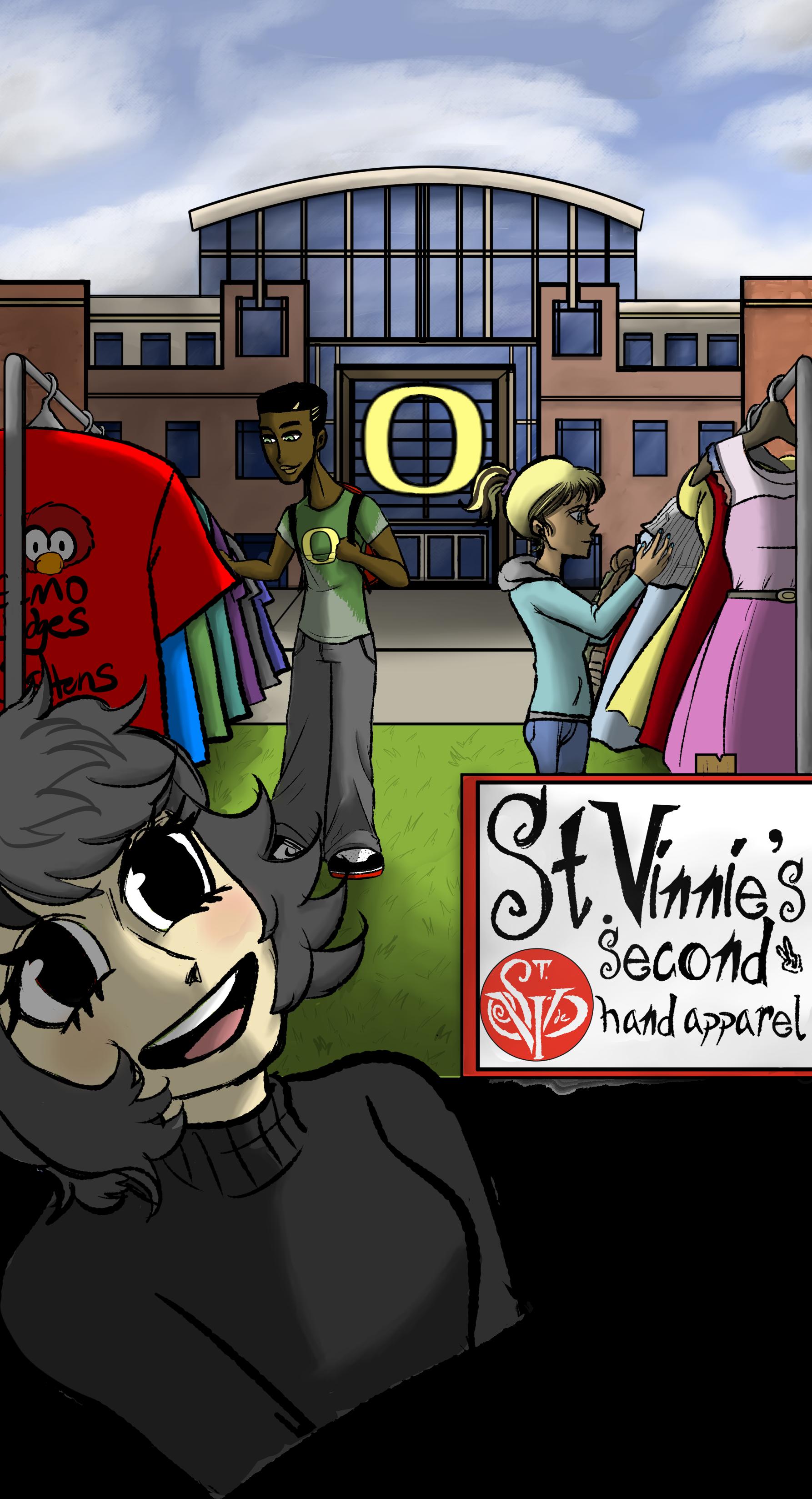


By Joe Krasnowski Senior Sports Writer
Rivalry games are far more than just high-charged contests where wackiness and parity reign; they also provide a consistent barometer for where programs are at in their particular season.
Oregon’s 3-0 (27-25, 25-22, 29-27) loss to rival Washington was closer than the final scoreline would suggest. Both teams were competitive throughout, with Oregon leading in kills (44-42) but struggling significantly in hit percentage and attack errors.
Alanah Clemente, Sophia Meyers and Valentina Vaulet had 12, 11 and 10 kills apiece for an Oregon team that once again utilized Cora Taylor (28 assists) — who Kersten described as being “a little off” as its primary engine.
Both teams were near even in total errors, but Washington was far more opportunistic at set points in the first and third when the match mattered the most.
“For us, it’s more about trying to be good on every single point,” Kersten said. “We don’t focus a whole lot on phases of the set.”
The Ducks went up 8-2 in the first set, but struggled to maintain momentum and consistency throughout.
“So much about this match was that we are being tested by teams that can play a little and expose you, and we just are not where we need to be volleyball-wise.” Kersten said.
Oregon has flashed its potential thus far in 2025, with
Oregon’s first-year head coach is learning to balance expectations with his own will to win.
home conference wins against Iowa and Ohio State the main highlights.
Still, Kersten expects more from his team overall, while still understanding the difficulties that come with playing in the Big Ten.
“At the end of the day, we are in the arena of the Big Ten playing really quality teams,” Kersten said. “We have so much to grow, (but) we have to be careful not to want to be before we give them time to get there. That’s something I’m battling with personally as a coach: how far do we push (and) how much development we push while still keeping things healthy.”
Oregon will likely be more than fine in the long run, but it’s going to be difficult for Kersten to separate realistic expectations from his own competitive spirit.
“Credit to Washington for exposing us in our tip defense and a couple other areas of the game that just are not good enough to win against a quality team right now,” Kersten said.
Kersten even acknowledged that his team is in a lot of positions it hasn’t been in before, especially in the Big Ten. That, parlayed with Oregon’s facilities and Kersten’s track record, means it would be surprising if Oregon isn’t back to the near-top of the conference in a year.
But for now, Oregon isn’t yet at that point, and for Kersten that means “a lot of sleepless nights.”
“When we choose to execute and do the right things, we can play; we just aren’t choosing that enough. We are not consistent enough.”
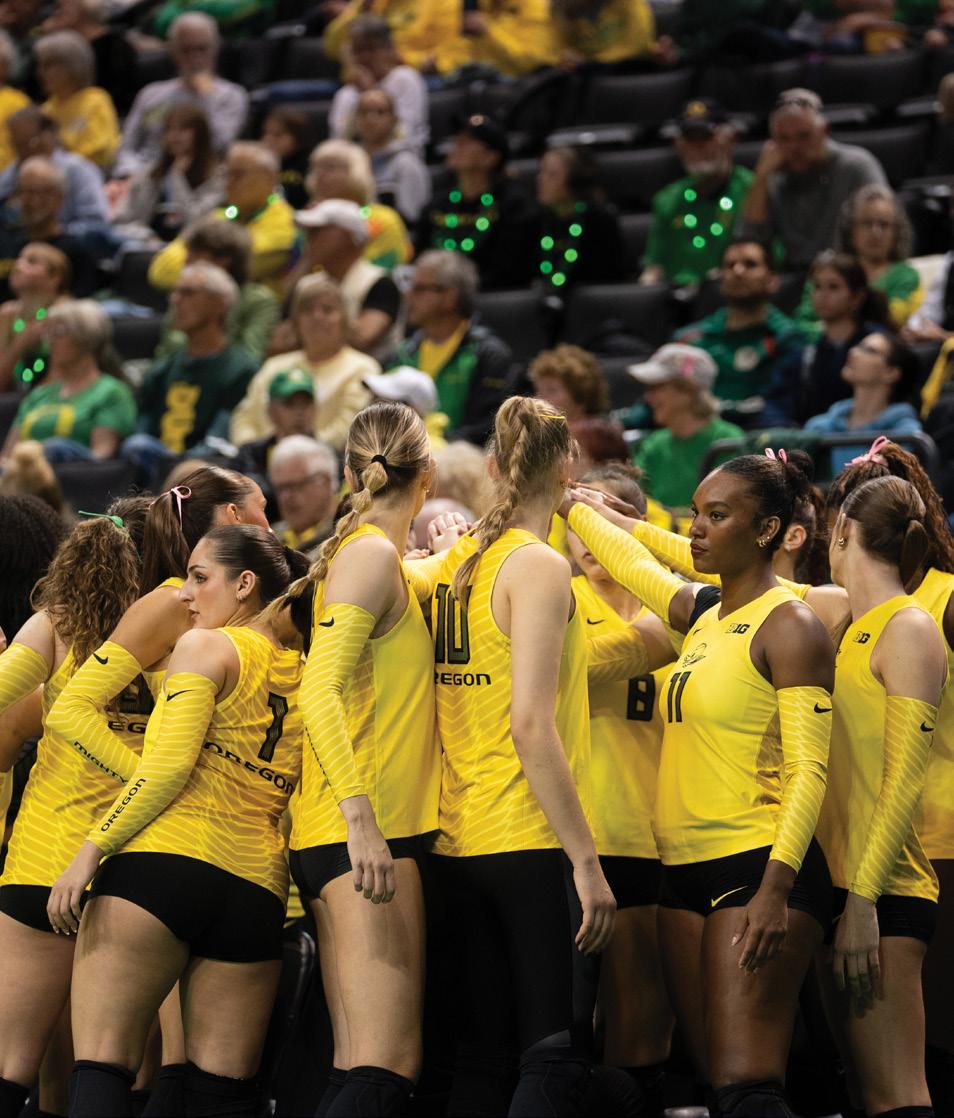
The Ducks swept both team races at their home Bill Dellinger Invitational to conclude preseason preparation.
By Owen Murray Associate Sports Editor
By the time Benjamin Balazs and Diana Cherotich crossed the finish line in first place at the Bill Dellinger Invitational, Oregon cross country already knew what it had. By the time both were named U.S. Track and Field and Cross Country Coaches’ Association (USTFCCCA) Division I National Athletes of the Week on Oct. 13, it was clear to everyone else: the Ducks have everything they need to remain challengers at the top of the Big Ten later this month. It’s a program with a rich history — 10 combined men’s and women’s national titles — and a women’s conference championship to defend this month. After a season stacked with collegiate and professional alumni success, the Ducks
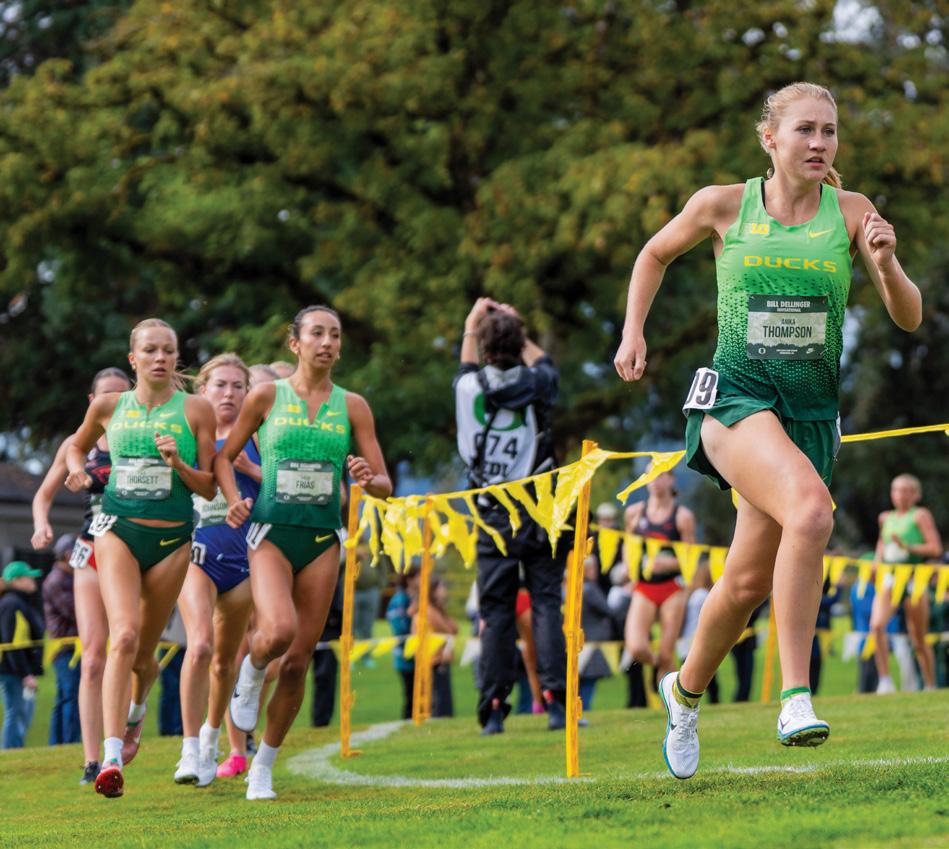
are poised to take a strong cross country campaign, which concluded with top-four sweeps of both the men’s and women’s races at the Dellinger, into the postseason.
Balazs, who won the Dellinger men’s 8K race in 23:08.2, leads a group that also includes Dellinger top-six finishers Evan Bishop (23:09.89), Abdel Laadjel (23:11.47), Aiden Smith (23:15.46) and Michael Mireles (23:25.61) into the Big Ten Championships later this month. The Ducks finished third at last year’s edition, behind Washington and champions Wisconsin, where Smith and Simeon Birnbaum (18th at the Dellinger) were named All-Big Ten after finishing in the top 10 of the championship race. Birnbaum was also named to the All-Freshman team.
The Ducks’ men’s program, headed by track and field head coach Jerry Schumacher, has flashed depth throughout the season — the Dellinger was the first time Balazs, Bishop, Laadjel, Smith or Mireles had run in official cross competition.
The previous two men’s outings — the 5K Mizzou Opener, hosted by the University of Missouri, and the 8K Cowboy Jamboree, hosted by Oklahoma State University — featured strong showings from Sergio Del Barrio (third at Mizzou, 28th in Oklahoma), Jack Meier (12th in Missouri) and Tayson Echohawk (16th in Oklahoma, second team All-Big Ten in 2024). Four Wisconsin runners finished in the top 20 at last year’s conference championships, and Oregon would have to put together a similar effort to push for the title.
Before the Dellinger, the USTFCCCA ranked Oregon as a projected autoqualifier to the NCAA Cross Country Championships, which will be hosted on Nov. 22 in Columbia, Missouri. Wisconsin, the only other Big Ten projected-AQ, sat atop the Great Lakes region and has remained the top seed through four polls, while Oregon began the season ranked behind Stanford in the West region but jumped the Cardinal after Week 1.
The rankings are determined “subjectively by a single member coach in each respective region,” the USTFCCCA said on its website. A strong performance at the conference championship, though, will go a long way toward cementing the Ducks’ first-overall place. In the Coaches’ Poll, Or-
egon ranked 14th, but has dropped every week after beginning the season in ninth. Still, it’s the second-best Big Ten program behind No. 7 Wisconsin.
On the women’s side, Cherotich and Juliet Cherubet led the way at the Dellinger for a group already ranked fourth in the nation by the coaches and top of the West in the regional rankings on Oct. 7. The Ducks sat behind only Brigham Young University (the unanimous first-place choice), NC State University and the University of Florida. Shalane Flanagan, who coached the Ducks’ strong women’s middle-distance group that put Oregon in the mix for last year’s team titles, is back at the helm of the women’s cross country team. In two regular-season meets at the 3-mile UVU Invitational in Orem, Utah and the 6K Gans Creek Classic in Missouri, the Ducks secured three top-five finishes. Cherubet was the only Oregon athlete to finish in the top five in Missouri, with a 19:20.30 outing, while Ella Thorsett (17:22.64) and Katie Clute (17:22.66) finished fourth and fifth in Utah.
At the Dellinger, it was all about freshman Cherotich, who ran 18:58.81 in her first race of the year to finish nearly a minute ahead of Cherubet, who still came through in 19:42.93. Thorsett finished sixth, while Clute finished 19th. It’s the first cross-country race for Cherotich, but not her first competition in an Oregon kit; she won the Big Ten 10,000-meter Championship at Hayward Field earlier this year.
For the Ducks, who still haven’t had 2024 All-Big Ten finishers Şilan Ayyıldız and Mia Barnett return from their elongated track seasons, the conference championships are an immense opportunity. They totaled five top 12 finishes at last year’s edition, and despite only one of those (Anika Thompson, 12th) having run a race this season, they’re still one of the favorites for this year’s team title.
The competition for this year’s Big Ten Championships is set for Oct. 31, in East Lansing, Michigan.

